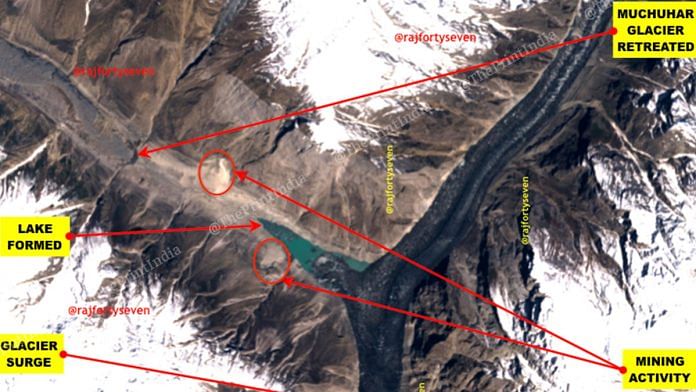New Delhi: Since February, worrying news has been coming out of the Disaster Management Authority in the Gilgit-Baltistan territory of Pakistan-occupied Kashmir. The movement of the Shishpar Glacier, also known as the Hasanabad Glacier, in the Karakoram mountain ranges has created a lake that is threatening human settlements.
The Karakoram mountains see a lot of geological volatility due to the anomalous surface rock structure in the area. The people in this region bear the brunt of this volatility, losing family and friends, property and livestock.
A prime example of this was the landslide in Hunza district in January 2010, which wiped out the upper reaches of Attabad village, created the Attabad Lake, displaced thousands of villagers and submerged the Karakoram Highway for over 30 kilometres. The highway was realigned and opened nearly six years later after massive efforts and tunnel-digging with Chinese help.
Recent studies of glaciers in the Karakoram ranges indicated that about 500 are retreating and more than 200 are surging. The studies suspect a possible drying of the Indus river basin due to these receding glaciers, which is another cause of worry for glaciologists.
ThePrint takes a wider look at the situation through satellite imagery to understand the phenomenon and the danger associated with it.
Glacial trends
The Shishpar Glacier has been surging since 1975, and most of the time, it converged with the Muchuhar Glacier emanating from Batura Sar, west of Sangemarmar Sar, separating the two glaciers.
Satellite imagery from 2006 indicates that the two glaciers were conjoined and flowing towards Hasanabad.
Also read: Too far gone? Even if we meet Paris target, Hindu Kush Himalayas will lose 1/3rd glaciers
Muchuhar Glacier
The Muchuhar Glacier has retreated almost 4 km between 2006 and 2017. The cause of such a quick retreat seems to be kinematics of loose surface rock, illegally exploited by local miners.
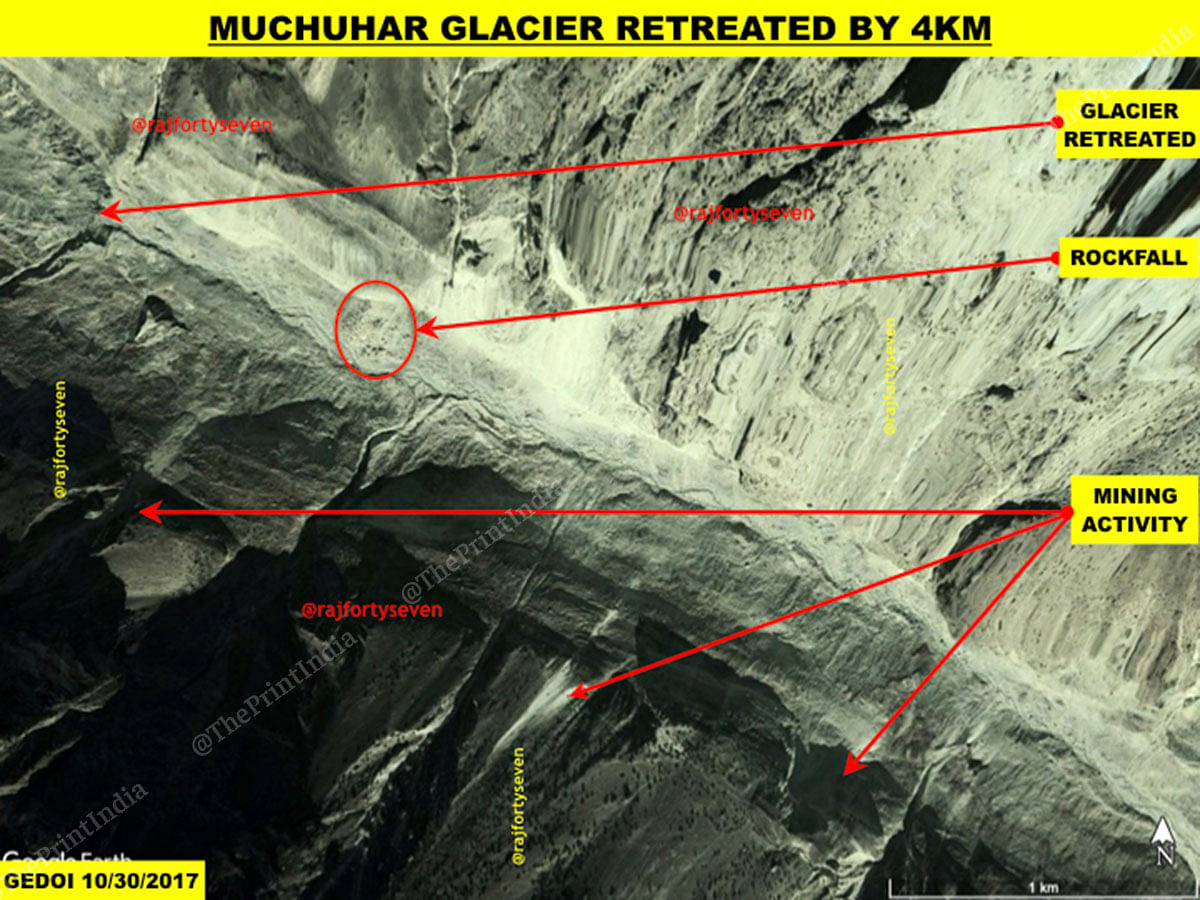
The glacier was broken into three parts by rocks falling from heights along the gorges and ridges. It is likely that local miners are using explosives during mining, affecting glacial movements in this area.
There are many tracks in the Muchuhar valley ending at mined areas. The rockfalls from these areas onto the glacier are clearly identified on the satellite imagery.
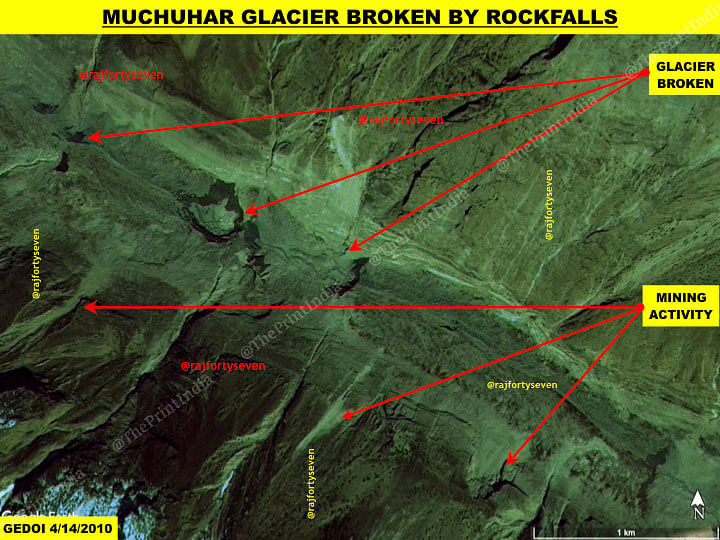
Shishpar Glacier
The Shishpar Glacier is formed with eight tributary glaciers joining the main glacier. Its width was reducing in the last decade, possibly due to the glacial dynamics and geological movements creating rockfalls on sides of the glacier.
Satellite images indicate that the glacier has been turning from white to grey to almost black. The increasing darkness of the colour can be attributed to the regular minor and major earthquakes in this area since 2010, which have caused rockfall and avalanche debris to form on these glaciers.
After 2016, the Shishpar Glacier has seen a sudden surge, which seems to be a classic case of a supra-glacial debris glacier moving over the main glacier. The width of the glacier has increased from 50-70 m, measured at various places on various time lapse satellite images from 2010 onwards.
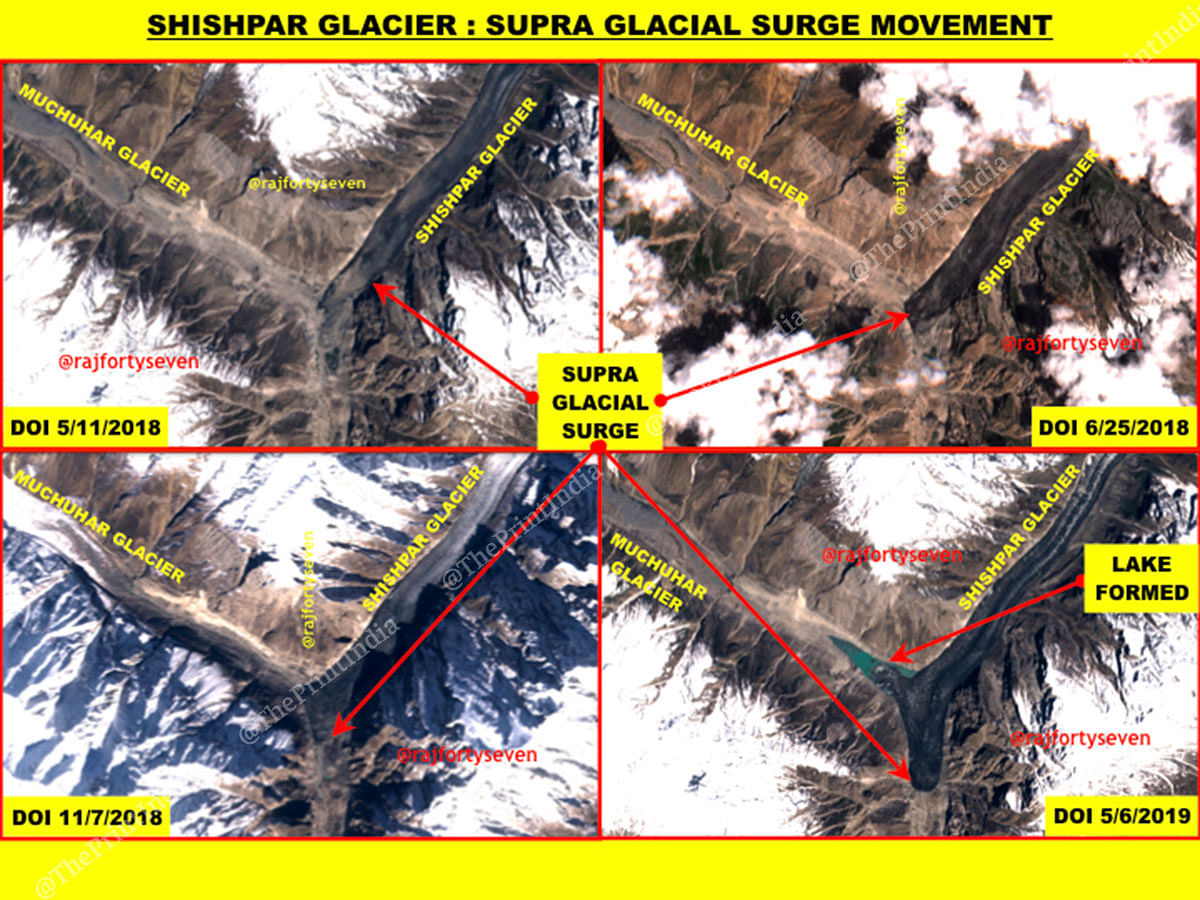
The movement of this supra-glacial surge has accelerated since June 2016. A NASA EO study indicates the speed of Shishpar Glacier surge to be about 13-18 m per day, which is very high.
The surge in the Shishpar Glacier has blocked the stream water from the Muchuhar Glacier since November 2018, which has slowly formed a lake in the Muchuhar valley.
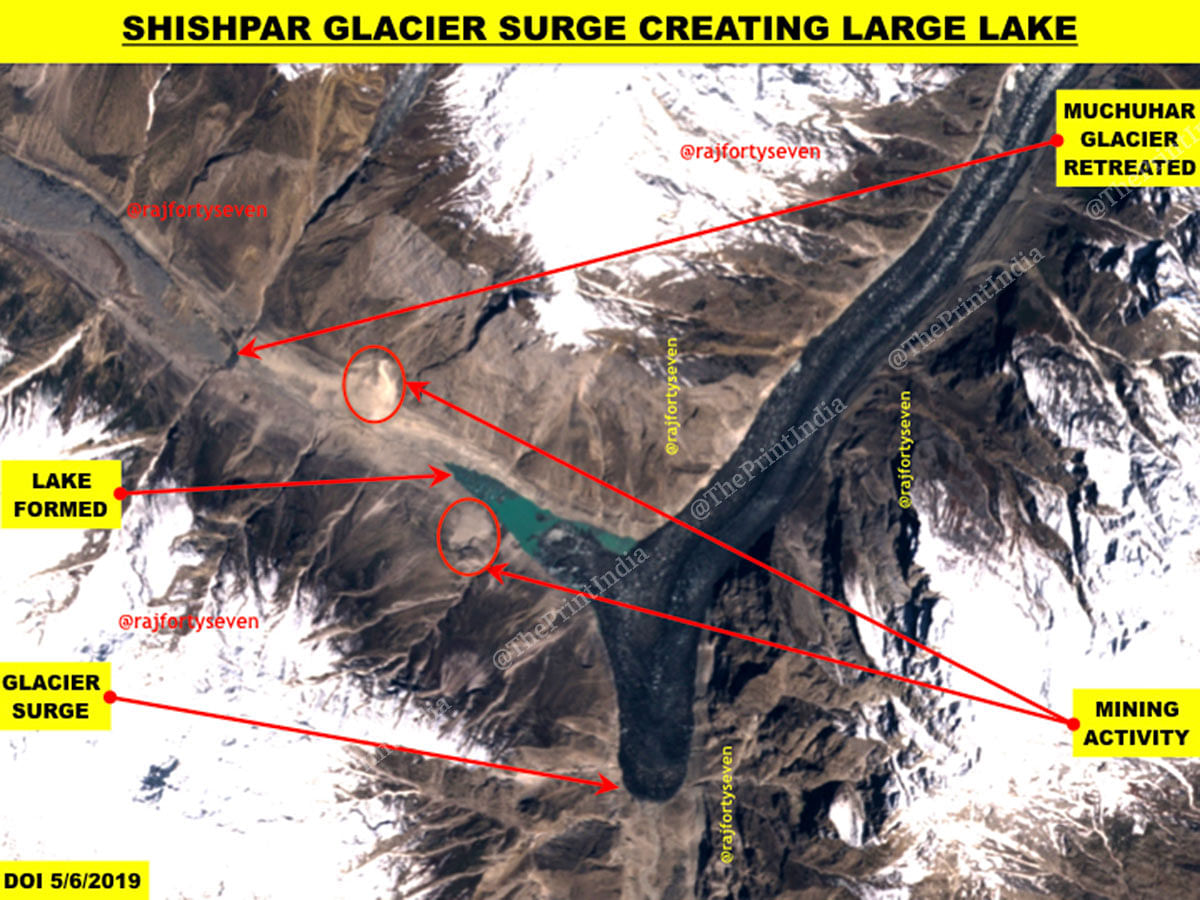
By March 2019, the lake created has become quite large, creating fears of sudden floods downstream due to possible breaking of the glacier.
The Gilgit-Baltistan Disaster Management Authority and the Pakistan Army, which are supposed to be monitoring the situation, claim that the “Shishper Glacier lake has been shrink [sic]”, and that “chances of GLOF (glacial lake outburst flood) has been almost minimum”.
The latest satellite imagery from 16 May 2019 indicates that the statement is not correct and the lake has grown a few metres between March and May.
Also read: How India realised it was at risk of losing the Siachen glacier to Pakistan


